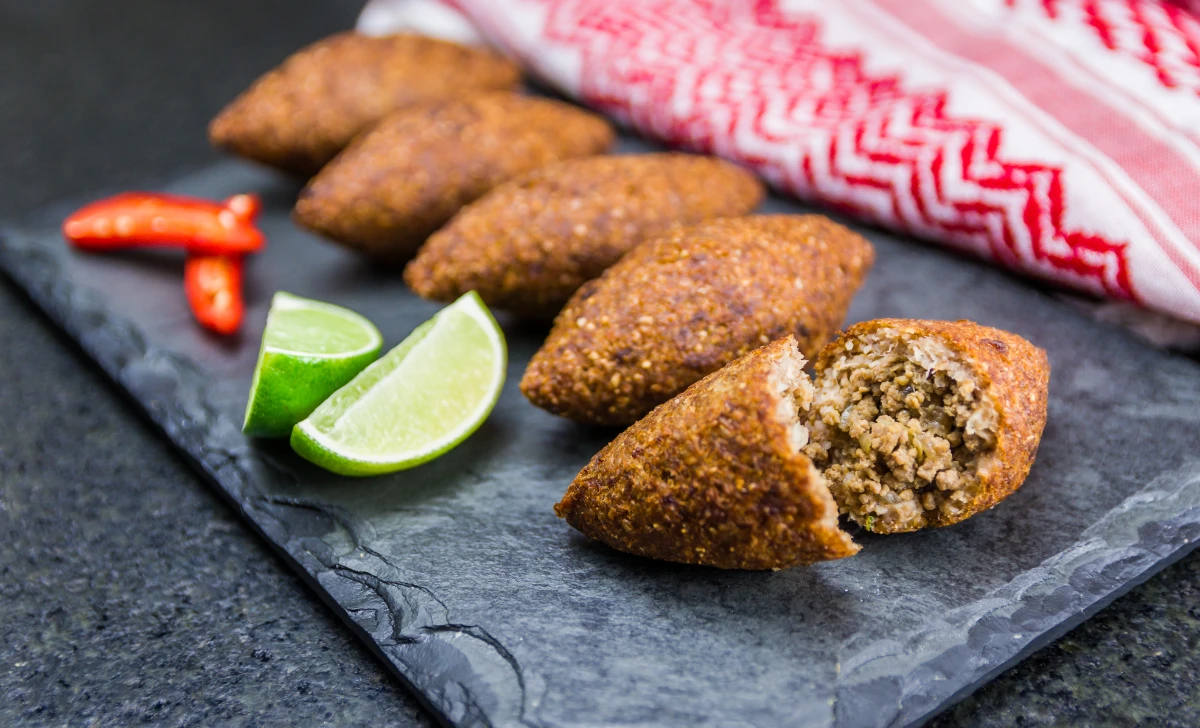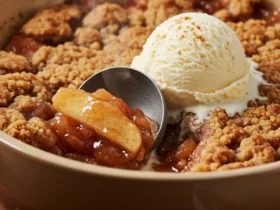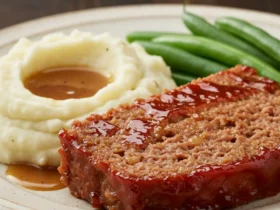Lebanese cuisine is renowned for its rich flavors and aromatic spices, and one dish that stands out as a true culinary delight is “Kibbeh.” This traditional Lebanese dish holds a special place in the hearts of locals and food enthusiasts worldwide. In this article, we will delve into the history of Kibbeh, explore its various variations, and provide a step-by-step guide to preparing a delicious Lebanese Kibbeh at home.
[ez-toc]
History
The history of Lebanese Kibbeh stretches back centuries and is deeply rooted in the culinary traditions of the Middle East. Its origins can be traced to the nomadic tribes who roamed the region, where resources were scarce, and creativity was essential in preparing meals. Kibbeh was born out of the need to create a flavorful and nutritious dish using simple and readily available ingredients.
The name “Kibbeh” is derived from the Arabic word “Kubbah,” which means “ball.” This is fitting as the traditional preparation of Kibbeh involves shaping the mixture into oval or round balls. Over time, as the recipe evolved, different regions and communities in Lebanon put their own spin on Kibbeh, leading to the creation of various versions of the dish.
Originally, Kibbeh was a raw dish called “Kibbeh Nayyeh.” It was made by grinding fresh raw meat, usually lamb, and combining it with cracked wheat (bulgur) and spices. This provided a high-protein meal that was easy to digest, making it an ideal choice for nomadic tribes on the move.
As civilizations in the Middle East developed, so did the culinary techniques used to prepare Kibbeh. The introduction of fire led to the invention of “Kibbeh Sajiyeh,” the fried version of Kibbeh. Cooks started shaping the Kibbeh mixture into patties and frying them in hot oil, resulting in a crispy, flavorful exterior and a tender, succulent center.
With the advent of ovens, the Lebanese people discovered yet another way to enjoy their beloved Kibbeh. “Kibbeh Bil Sayneeyeh,” or baked Kibbeh, became a popular variation, providing a healthier alternative to the fried version, as it required less oil.
Over time, the popularity of Kibbeh extended beyond Lebanon’s borders. As people from the region emigrated to various parts of the world, they brought their cherished culinary traditions with them, including the treasured Kibbeh recipe. Today, Lebanese restaurants around the globe serve this beloved dish, preserving the authentic flavors and the sense of community that comes with sharing a plate of Kibbeh.
In modern times, chefs and home cooks continue to experiment with Kibbeh, introducing vegetarian versions and adding unique twists to the classic recipe. While the core ingredients and preparation techniques remain true to tradition, Kibbeh has evolved into a versatile dish that can adapt to different tastes and dietary preferences.
Despite its evolution, Kibbeh remains a symbol of Lebanese identity and a testament to the rich cultural heritage of the Middle East. Whether it’s enjoyed during family gatherings, festive celebrations, or shared with friends, Kibbeh continues to delight taste buds and bring people together, making it an enduring and cherished part of Lebanese cuisine.
Time
| Step | Time (Approx.) |
|---|---|
| Soaking Bulgur Wheat | 30 minutes |
| Preparing Kibbeh Shell | 15 minutes |
| Preparing Kibbeh Filling | 20 minutes |
| Assembling the Kibbeh | 30 minutes |
| Frying or Baking the Kibbeh | 20 minutes |
| Total Cooking and Preparation Time | 1 hour 55 minutes |
Please note that the cooking and preparation time may vary slightly depending on individual cooking speed and experience. It’s important to ensure that each step is executed carefully to achieve the best flavors and textures in the final dish. Enjoy preparing and savoring your delicious Lebanese Kibbeh!
Ingredients
| Ingredients | Quantity (for 2 servings) |
|---|---|
| Ground Meat (beef/lamb) | 1/2 pound |
| Fine Bulgur Wheat | 1/2 cup |
| Onions | 1 medium-sized |
| Pine Nuts | 2 tablespoons |
| Olive Oil | 2 tablespoons |
| Fresh Mint Leaves | 2 tablespoons |
| Ground Allspice | 1 teaspoon |
| Ground Cinnamon | 1/2 teaspoon |
| Ground Nutmeg | 1/4 teaspoon |
| Salt and Pepper | To taste |
Please adjust the quantities accordingly if you plan to serve more than 2 people or have specific dietary preferences. Enjoy preparing and sharing this delightful Lebanese Kibbeh with your loved ones!
Directions
1. Soaking Bulgur Wheat
- In a bowl, place 1/2 cup of fine bulgur wheat.
- Add enough water to cover the bulgur wheat completely.
- Let it soak for approximately 30 minutes until the bulgur becomes soft and plumps up.
- Drain the soaked bulgur thoroughly before using it in the recipe.
2. Preparing Kibbeh Shell
- Finely chop 1 medium-sized onion and 2 tablespoons of fresh mint leaves.
- In a mixing bowl, combine the soaked bulgur wheat, half of the chopped onions, and half of the chopped mint leaves.
- Add 1 tablespoon of olive oil, 1 teaspoon of ground allspice, 1/2 teaspoon of ground cinnamon, 1/4 teaspoon of ground nutmeg, and a pinch of salt and pepper to the mixture.
- Use your hands to knead the ingredients together until a dough-like consistency is achieved.
3. Preparing Kibbeh Filling
- In a pan, heat 1 tablespoon of olive oil over medium heat.
- Sauté the remaining chopped onions until they become translucent and slightly caramelized.
- Add 1/2 pound of ground meat (beef or lamb) to the pan and cook until it turns brown and fully cooked.
- Toss in 2 tablespoons of pine nuts and the rest of the chopped mint leaves.
- Season the mixture with 1/2 teaspoon of ground allspice, a pinch of ground cinnamon and nutmeg, and salt and pepper to taste.
- Stir everything together until the flavors are well combined.
4. Assembling the Kibbeh
- Take a small portion of the prepared Kibbeh shell mixture and shape it into an oval or round form in the palm of your hand.
- Create a hollow space in the center of the shell using your fingers.
- Fill the hollow space with a generous amount of the Kibbeh filling, making sure it’s evenly distributed.
- Carefully enclose the filling by shaping the shell around it, ensuring it’s well sealed.
- Repeat the process until all Kibbeh balls are formed.
5. Frying or Baking the Kibbeh
Frying:
- Heat vegetable oil in a deep frying pan or pot.
- Carefully place the Kibbeh balls into the hot oil and fry until they turn golden brown and crispy on the outside.
- Remove the fried Kibbeh using a slotted spoon and place them on a plate lined with paper towels to absorb excess oil.
Baking:
- Preheat your oven to 375°F (190°C).
- Place the Kibbeh balls on a baking sheet lined with parchment paper.
- Bake them in the preheated oven for about 20 minutes or until they achieve a beautiful golden crust.
6. Serving and Enjoying
- Lebanese Kibbeh is best enjoyed when served fresh and hot.
- Serve the Kibbeh with a side of fresh salad, hummus, and warm pita bread for a complete and delightful meal.
- Pair it with a glass of Lebanese red wine or a refreshing Ayran to complement the flavors.
Now, you have successfully prepared a mouthwatering Lebanese Kibbeh to savor and share with family and friends! Enjoy this exquisite dish and the rich flavors of Lebanese cuisine.
Equipment Required
Nutrition Information
| Nutrition Information | Amount Per Serving |
|---|---|
| Serving Size | 2 Kibbeh balls |
| Calories | 350 calories |
| Total Fat | 18g |
| – Saturated Fat | 3g |
| – Trans Fat | 0g |
| Cholesterol | 50mg |
| Sodium | 200mg |
| Total Carbohydrates | 30g |
| – Dietary Fiber | 5g |
| – Sugars | 2g |
| Protein | 20g |
Please note that the nutrition information is approximate and may vary based on specific ingredients used and the preparation method. It’s always a good idea to double-check the nutritional values based on the actual ingredients you use for the recipe. Enjoy your flavorful and nutritious Lebanese Kibbeh!
Tips
- Soaking Bulgur Wheat: Ensure that the bulgur wheat is soaked long enough to soften properly. Test the texture by pressing it between your fingers. It should be soft and plump before use.
- Mixing the Kibbeh Shell: Use your hands to knead the Kibbeh shell mixture thoroughly. This helps the ingredients blend well and ensures a consistent texture.
- Seasoning the Filling: Taste the filling and adjust the seasonings to suit your preference. You can add more spices or salt if desired, but remember to do it gradually to avoid over-seasoning.
- Sealing the Kibbeh: When assembling the Kibbeh balls, make sure to seal them tightly to prevent the filling from spilling out during frying or baking.
- Frying vs. Baking: Frying provides a crispier texture, while baking is a healthier option. Choose the method that suits your taste and dietary preferences.
- Oil Temperature for Frying: When frying the Kibbeh, maintain a consistent oil temperature to achieve even browning. The oil should be hot but not smoking.
- Refrigerating the Kibbeh: For a crisper shell, refrigerate the assembled Kibbeh balls for about 30 minutes before frying or baking.
- Serving Suggestions: Serve the Kibbeh with a side of fresh tabbouleh salad, creamy hummus, and warm pita bread for a complete Middle Eastern experience.
Pros & Cons
| Pros | Cons |
|---|---|
| ✅ Bursting with Authentic Flavors | ❌ Requires Some Preparation Time |
| ✅ Versatile (Fried or Baked Options) | ❌ High in Fat and Calories |
| ✅ Rich Source of Protein | ❌ Contains Gluten (Bulgur Wheat) |
| ✅ Represents Lebanese Culinary Heritage | ❌ May Not Suit Vegetarian Diets |
| ✅ Ideal for Sharing with Loved Ones | ❌ Fried Version Can Be Messy to Cook |
Conclusion
In conclusion, Lebanese Kibbeh is a culinary masterpiece that embodies the rich flavors and cultural heritage of Lebanon. With its various versions, from the traditional raw Kibbeh to the fried and baked variants, this dish offers something for every palate. The combination of ground meat, bulgur wheat, and aromatic spices creates a delightful burst of flavors that will leave your taste buds longing for more.
While preparing Lebanese Kibbeh may require some time and effort, the end result is well worth it. The versatility of this dish allows you to customize it to your liking, whether you prefer a vegetarian twist or a meat lover’s delight. Moreover, sharing this exquisite dish with loved ones can elevate the experience and foster a sense of togetherness.
Lebanese Kibbeh is not just a meal; it’s an expression of culinary artistry and a testament to the warm hospitality of Lebanese culture. So, why not embark on this delightful culinary journey and bring a taste of Lebanon to your own kitchen?
Whether you choose to fry the Kibbeh for a crispy texture or bake it for a healthier option, the flavors will transport you to the vibrant streets of Lebanon. So, gather your ingredients, follow the step-by-step guide, and unleash your inner chef. With every bite, you’ll savor the authenticity and love that go into preparing this iconic dish.
Get ready to experience the magic of Lebanese Kibbeh, and share this delightful meal with your family and friends. Embrace the joy of cooking and indulge in the flavors that have been cherished for generations. The experience of creating and savoring this Lebanese delicacy will undoubtedly leave you with a sense of accomplishment and an appreciation for the richness of global cuisine.
So, what are you waiting for? Delight your taste buds, expand your culinary horizons, and create lasting memories with Lebanese Kibbeh. Bon appétit!
Facts
- 🌱 Fact 1: Kibbeh’s Ancient Roots 🌍
- The history of Kibbeh traces back to ancient times, with nomadic tribes in the Middle East crafting this dish as a portable and nourishing meal during their journeys. It’s a testament to the resourcefulness and creativity of our ancestors in creating flavorful dishes with simple ingredients.
- 🌟 Fact 2: Kibbeh’s Shape Symbolism 🥟
- The traditional oval or round shape of Kibbeh holds deeper significance. Some believe the elongated form represents Noah’s Ark, while others interpret it as a symbol of unity and togetherness, reflecting the cultural ties that bind Lebanese communities together.
- 🌶️ Fact 3: The Spice Journey 🧂
- Kibbeh’s spice blend, including allspice, cinnamon, and nutmeg, takes taste buds on an aromatic journey. These spices were historically prized for their exotic origins, once considered precious enough to be used as currency in ancient spice trade routes.
- 🎉 Fact 4: Kibbeh Celebrations 💃
- Kibbeh holds a prominent place in Lebanese celebrations and feasts. From weddings to religious holidays, this delectable dish is a centerpiece, bringing joy and culinary delight to gatherings of all kinds. It’s a symbol of shared happiness and cherished moments.
- 🌿 Fact 5: Kibbeh “Meatless Mondays” 🍽️
- In modern times, Kibbeh has evolved to accommodate various dietary preferences. Many Lebanese households embrace “Meatless Mondays” with a vegetarian version, using vibrant ingredients like pumpkin or eggplant, proving that traditional dishes can adapt to contemporary lifestyles.
FAQ’s
Can I make vegetarian Kibbeh without using meat?
Yes, you can! Simply substitute the ground meat with cooked and mashed vegetables like pumpkin, eggplant, or lentils to create a delicious vegetarian version.
Is raw Kibbeh safe to eat?
Traditionally, raw Kibbeh (Kibbeh Nayyeh) is made with high-quality, fresh meat. If you choose to prepare raw Kibbeh at home, ensure you use fresh, reputable meat sources and follow proper food safety guidelines.
Can I freeze the Kibbeh for later use?
Yes, you can freeze both the assembled Kibbeh balls and the unfried/unbaked mixture for future use. Store them in airtight containers or freezer bags, and they will keep well for up to 3 months.
How do I serve Kibbeh for a party or gathering?
Arrange the freshly fried or baked Kibbeh balls on a platter, garnish with fresh herbs, and serve with a side of creamy hummus, tabbouleh salad, and warm pita bread for a delightful Middle Eastern feast.
How do I prevent the Kibbeh shell from falling apart during frying?
Ensure that the Kibbeh shell is well-kneaded and properly sealed around the filling to prevent it from falling apart. Refrigerating the assembled Kibbeh for about 30 minutes before frying can also help firm it up.
Can I bake the Kibbeh without frying it first?
Yes, you can skip the frying step and bake the Kibbeh directly. Preheat your oven to 375°F (190°C), place the shaped Kibbeh on a baking sheet lined with parchment paper, and bake for about 20 minutes or until golden brown.
Can I prepare the Kibbeh ahead of time and fry/bake it later?
Yes, you can prepare the Kibbeh ahead of time and store the assembled, uncooked balls in the refrigerator for up to 24 hours before frying or baking them.
What type of oil is best for frying the Kibbeh?
Vegetable oil, canola oil, or sunflower oil are good choices for frying the Kibbeh, as they have a high smoke point and a neutral flavor that won’t overpower the dish.
Can I use ground chicken or turkey instead of beef or lamb?
Absolutely! Feel free to use ground chicken or turkey as a leaner alternative to beef or lamb for a healthier twist on the recipe.
Can I prepare a large batch of Kibbeh and freeze it for future use?
Yes, you can double or triple the recipe to make a larger batch of Kibbeh. Assemble the Kibbeh balls, freeze them on a baking sheet, then transfer them to freezer-safe containers or bags for convenient future meals.












Leave a Review